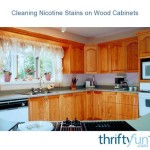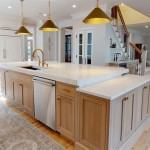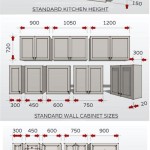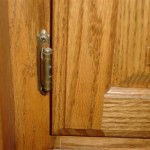Sherwin Williams Kitchen Cabinet Paint Ideas: A Comprehensive Guide
Kitchen cabinets are a focal point in any kitchen space. Refreshing them with a new coat of paint can dramatically transform the aesthetic without the expense of a complete renovation. Sherwin Williams offers a comprehensive range of paints specifically designed for kitchen cabinets, known for their durability, finish options, and extensive color palette. Selecting the right paint and color combination is critical to achieving the desired outcome and ensuring the cabinets withstand daily wear and tear.
This article explores various Sherwin Williams kitchen cabinet paint ideas, encompassing popular color choices, paint types, surface preparation techniques, and application methods. It aims to provide homeowners and painting professionals with the necessary information to make informed decisions and execute a successful cabinet painting project.
Choosing the Right Sherwin Williams Paint for Kitchen Cabinets
The selection of the paint type is a foundational step in any cabinet painting project. Sherwin Williams offers several options that are well-suited for kitchen cabinets, each with its own advantages. Two prominent choices are alkyd paints and acrylic paints. Understanding the characteristics of each allows for a more tailored selection based on specific needs and preferences.
Alkyd paints, often referred to as oil-based paints, are renowned for their durability and leveling properties. Leveling refers to the paint's ability to flow smoothly and minimize brush strokes, resulting in a smooth, professional-looking finish. Alkyd paints are also highly resistant to chipping and scratching, making them a good choice for high-traffic areas like kitchen cabinets. However, alkyd paints have a longer drying time compared to acrylic paints, and they typically require mineral spirits for cleanup. They also have a higher VOC (Volatile Organic Compound) content, which can contribute to a stronger odor during application and drying. Sherwin Williams offers alkyd options like ProClassic Interior Oil Based Enamel, known for its hard, durable finish.
Acrylic paints, on the other hand, are water-based and have a lower VOC content, resulting in less odor. They dry faster than alkyd paints and are easier to clean up with soap and water. Acrylic paints have excellent color retention and are less prone to yellowing over time, a common issue with some alkyd paints. While generally less durable than alkyd paints, advancements in acrylic paint technology have significantly improved their durability. Sherwin Williams offers several acrylic options suitable for cabinets, including Emerald Urethane Trim Enamel and ProClassic Interior Acrylic Latex Enamel. These paints provide a hard, durable finish with excellent adhesion and resistance to moisture and stains, making them well-suited for kitchen environments.
When selecting between alkyd and acrylic paints, consider factors such as desired durability, drying time, VOC level, ease of cleanup, and overall budget. For a balance of durability, ease of use, and lower VOCs, a high-quality acrylic enamel is often the preferred choice for kitchen cabinet painting. Sherwin Williams provides detailed product specifications and recommendations to help guide the selection process.
Popular Sherwin Williams Kitchen Cabinet Color Ideas
The color palette for kitchen cabinets is vast, ranging from timeless neutrals to bold, contemporary hues. Sherwin Williams boasts an extensive color selection, allowing homeowners to customize their kitchen space to reflect their personal style. The color choice significantly impacts the overall ambiance and perceived size of the kitchen. Light colors tend to make a space feel larger and brighter, while darker colors can add depth and drama.
Neutral colors remain a popular choice for kitchen cabinets due to their versatility and timeless appeal. White cabinets, such as those painted in Sherwin Williams Pure White, are a classic option that brightens the space and complements a variety of countertop and backsplash materials. Other popular neutral choices include off-whites, grays, and beiges. Sherwin Williams Agreeable Gray is a versatile greige (gray-beige) that works well in various lighting conditions. Accessible Beige is another popular choice, offering a warm and inviting neutral backdrop. These neutral colors provide a blank canvas that allows for incorporating pops of color through accessories, appliances, and wall décor.
For those seeking a more modern and sophisticated look, gray cabinets are a stylish option. Sherwin Williams offers a spectrum of gray shades, ranging from light and airy to deep and dramatic. Light grays, such as Gray Owl, create a calming and sophisticated atmosphere. Darker grays, like Iron Ore, add depth and visual interest, particularly when paired with lighter countertops and backsplashes. Blue-gray hues, such as Rainwashed, introduce a subtle hint of color while maintaining a calming and elegant aesthetic. These gray tones offer a contemporary alternative to traditional white cabinets.
Beyond neutrals, bolder colors can create a statement in the kitchen. Navy blue cabinets, painted in colors like Sherwin Williams Naval, add a touch of sophistication and drama. Green cabinets, in shades like Evergreen Fog, bring a natural and organic feel to the space. Two-toned cabinets, where the upper and lower cabinets are painted in different colors, are another popular trend. For example, pairing white upper cabinets with navy blue lower cabinets creates a visually appealing contrast. When considering bolder colors, it's important to consider the overall kitchen design and ensure that the cabinet color complements the countertops, backsplash, and flooring.
Ultimately, the best cabinet color depends on individual preferences, the existing kitchen design, and the desired ambiance. Sherwin Williams offers various tools and resources, including online color visualizers and in-store color consultations, to help homeowners choose the perfect paint color for their kitchen cabinets.
Surface Preparation and Application Techniques for Kitchen Cabinets
Proper surface preparation is paramount to achieving a professional and durable finish on kitchen cabinets. Neglecting this step can lead to adhesion issues, uneven paint application, and a less than desirable outcome. Thorough preparation involves cleaning, sanding, priming, and ensuring a smooth and even surface before applying the topcoat.
The first step in surface preparation is to thoroughly clean the cabinets. Remove all hardware, such as knobs and pulls, and clean the cabinet surfaces with a degreasing cleaner to remove any grease, dirt, or grime. A mixture of warm water and dish soap can be effective for this purpose. Rinse the cabinets with clean water and allow them to dry completely before proceeding. For cabinets with stubborn grease or stains, a stronger degreaser may be necessary. Ensure the cleaning agent is compatible with the cabinet material to avoid damage.
After cleaning, sanding is crucial for creating a smooth surface and promoting adhesion. Begin by sanding the cabinets with medium-grit sandpaper (around 120-150 grit) to remove any existing finish or imperfections. Pay particular attention to areas with drips, runs, or unevenness. After the initial sanding, switch to a finer-grit sandpaper (around 220 grit) to further smooth the surface. Sand in the direction of the wood grain to avoid scratching. For cabinets with intricate details or moldings, use sanding sponges or detail sanders to reach tight areas. After sanding, thoroughly remove all sanding dust with a tack cloth or vacuum cleaner.
Priming is an essential step for several reasons. Primer helps to seal the cabinet surface, providing a uniform base for the paint. It also improves adhesion, preventing the paint from peeling or chipping. Choose a high-quality primer that is specifically designed for cabinets or trim. Sherwin Williams offers a range of primers suitable for kitchen cabinets, including their Extreme Bond Primer, which is known for its excellent adhesion to difficult surfaces. Apply the primer in thin, even coats using a brush, roller, or sprayer. Allow the primer to dry completely according to the manufacturer's instructions before proceeding to the next step. Lightly sand the primed surface with fine-grit sandpaper to remove any imperfections and create a smooth base for the paint.
When applying the paint, choose the appropriate application method based on the desired finish and your comfort level. A brush and roller are suitable for smaller projects or for achieving a more textured finish. Use a high-quality brush designed for enamel paints and a foam roller for smooth surfaces. Apply the paint in thin, even coats, avoiding drips and runs. For a smoother, more professional finish, consider using a paint sprayer. Spraying provides a consistent and even coat of paint, minimizing brush strokes and roller marks. However, spraying requires more preparation, including masking off surrounding areas and using proper ventilation. Thin the paint according to the sprayer manufacturer's instructions to ensure proper atomization. Apply multiple thin coats rather than one thick coat to prevent drips and ensure proper drying.
Whether using a brush, roller, or sprayer, allow each coat of paint to dry completely before applying the next. Lightly sand between coats with fine-grit sandpaper to remove any imperfections and create a smooth surface for the subsequent coat. Apply at least two coats of paint for optimal coverage and durability. Once the final coat is dry, allow the paint to cure completely before reattaching the hardware and putting the cabinets back into use. Curing time can vary depending on the paint type and environmental conditions, but typically takes several days to a week. Following these surface preparation and application techniques will result in a professional-looking and durable finish that will enhance the beauty of your kitchen cabinets for years to come.
Proper care and maintenance of the painted cabinets will further extend their lifespan. Clean the cabinets regularly with a mild soap and water solution and avoid using abrasive cleaners or scouring pads. Promptly wipe up any spills or splatters to prevent staining. By investing time and effort in surface preparation and application, and by choosing high-quality Sherwin Williams paints, homeowners can transform their kitchen cabinets and create a beautiful and functional space.

Popular Kitchen Cabinet Paint Colors West Magnolia Charm

The Best Sherwin Williams Paint Colors For Kitchen Spaces Perfecting Places

Top Kitchen Cabinet Paint Colors From Sherwin Williams

Popular Sherwin Williams Cabinet Paint Colors

Popular Sherwin Williams Cabinet Paint Colors Painted Kitchen Cabinets

Paint Color Inspiration For Kitchens Sherwin Williams Painted Kitchen Cabinets Colors Cabinet

Kitchen Cabinets Sherwinwilliams

Colores Y Gabinetes Un Poco Mas Tradicionales Shaker Cabinets Taupe Kitchen Beige Cabinet Colors

Cabinet Refinishing Guide

3 Kitchen Trends We Re Loving In 2024 Tinted By Sherwin Williams
Related Posts








